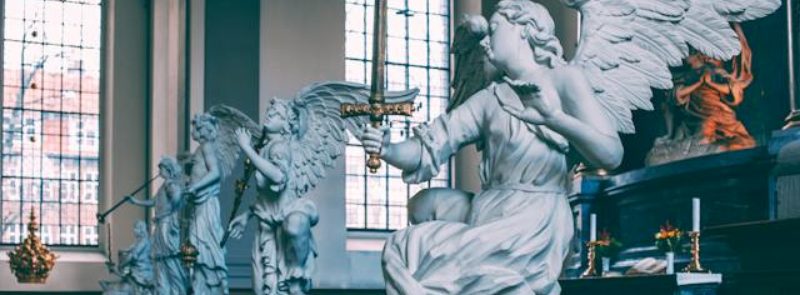
When It Occurs
Every March 5th
Timeline
Days Passed (999)
# Hashtags
#StPiransDay #CornishCulture
Every year on March 5th, St Piran's Day is celebrated as the national day of Cornwall. Named after Saint Piran, the patron saint of Cornwall and tin miners, the festivities encompass parades, dancing, singing, and music. For many in Cornwall, St Piran's Day marks the symbolic beginning of spring, and the day is often associated with the daffodil.
Who Was St Piran?
St Piran is believed to have been a 5th-century Celtic saint who traveled from Ireland to Cornwall. According to legend, Piran was originally an Irish priest who was thrown into the sea by Irish pagans, tied to a millstone. Miraculously, he survived, floating to the shores of Cornwall, where he landed at Perranporth. He is credited with discovering tin, a metal that became integral to Cornwall's economy for centuries.
The Legend of St Piran
One of the most famous stories about St Piran involves his discovery of tin. According to legend, while St Piran was building a fire, the heat caused the black rocks around him to melt, revealing a stream of pure white tin. This discovery led to the development of Cornwall’s historic tin mining industry, making St Piran the patron saint of tin miners. The Cornish flag, known as St Piran's Flag, symbolizes this legend: the white cross represents the white tin flowing from the black rock.
St Piran’s Flag
St Piran’s Flag, a black background with a white cross, is a widely recognized symbol of Cornwall and Cornish identity. It is often flown during celebrations, parades, and festivals across Cornwall and is deeply associated with Cornish pride and independence. The flag is not only used on St Piran’s Day but also throughout the year, representing solidarity among Cornish communities.
Celebrations of St Piran’s Day
St Piran’s Day is marked by vibrant celebrations that highlight Cornish culture, language, and traditions. These celebrations are not limited to Cornwall; Cornish communities worldwide, particularly in places like Australia and the United States, also observe the day with pride.
-
Parades and Processions
- One of the most notable aspects of St Piran’s Day is the parades held in various towns and villages across Cornwall. These processions often feature participants dressed in traditional Cornish clothing, waving St Piran’s flags, and singing Cornish anthems. The largest parades take place in Penzance, Truro, and Redruth, each showcasing local culture.
- In Perranporth, a famous pilgrimage takes place where people gather at Perran Sands and walk to the Oratory of St Piran, believed to be one of the oldest Christian sites in Cornwall, where a service is held to commemorate the saint’s arrival in Cornwall.
-
Cornish Music and Dance
- Traditional Cornish music and dance play a key role in St Piran’s Day celebrations. Musicians perform folk songs in public spaces, and local bands may march in the parades, playing tunes that reflect the rich cultural heritage of Cornwall. Cornish dances, such as the furry dance and troyls, are performed by groups in traditional attire, often accompanied by live musicians.
-
Food and Drink
- Cornish food is a central part of the celebrations, with popular local dishes like Cornish pasties, saffron buns, and heva cakes being enjoyed by many. Some people use St Piran’s Day as an opportunity to indulge in Cornish ales and ciders, highlighting Cornwall’s culinary traditions.
-
Cornish Language
- St Piran’s Day is an important time for the revival of the Cornish language, known as Kernewek, which is a crucial element of Cornwall’s cultural heritage. Many events on the day incorporate the use of Cornish language, with prayers, songs, and greetings spoken in Kernewek. Cornish language enthusiasts use the day to promote and celebrate their efforts in reviving the language, encouraging more people to learn and speak it.
-
Cultural Events and Festivals
- Many towns and communities host cultural events during the St Piran’s Day period, including theatre performances, storytelling sessions, art exhibitions, and historical talks focused on Cornish heritage. These events provide insight into Cornwall’s rich history and allow people to learn more about their local culture.
St Piran’s Day and Cornish Identity
St Piran’s Day plays a crucial role in promoting and preserving Cornish identity, especially as Cornwall’s unique cultural, historical, and linguistic features differentiate it from the rest of England. Over the years, Cornish people have sought greater recognition of their identity, and events like St Piran’s Day help foster a sense of pride and community among Cornish people.
In 2014, Cornish people were granted minority status under the European Framework Convention for the Protection of National Minorities, which was a significant step in recognizing Cornwall’s distinct cultural identity. St Piran’s Day has since become even more meaningful as a symbol of Cornish pride and unity.
St Piran’s Day Around the World
The celebrations of St Piran’s Day are not confined to Cornwall. Cornish communities and expatriates around the world, particularly in places with a significant Cornish diaspora, such as Australia, Canada, and the United States, also mark the occasion. These global celebrations help maintain a connection to Cornish roots and promote the culture internationally.
Modern Significance
In recent years, there have been calls for St Piran’s Day to be recognized as a public holiday in Cornwall, given its cultural importance. Many workplaces and schools in Cornwall already recognize the day by hosting local events, encouraging people to wear black, white, and gold, and fly the St Piran’s flag. Whether recognized officially or not, the day continues to grow in importance as a means of celebrating Cornwall’s heritage.
How to Celebrate St Piran’s Day
For those looking to participate in St Piran’s Day, here are some popular ways to get involved:
- Attend a local parade: Join the processions in Cornwall’s towns or make a pilgrimage to Perranporth to take part in the coastal celebrations.
- Fly the St Piran’s flag: Show your support for Cornwall’s identity by flying the flag on your home or wearing the colors black and white.
- Enjoy Cornish food: Try a traditional Cornish pasty, bake saffron buns, or indulge in a Cornish cream tea.
- Learn a few words of Cornish: Participate in Cornish language events or learn some basic phrases to celebrate the revival of the Kernewek language.
- Support local Cornish businesses: Many Cornish artisans and makers celebrate St Piran’s Day by showcasing local crafts and products, so it’s a great day to support Cornish enterprises.
Conclusion
St Piran’s Day is a day of pride, celebration, and community for the people of Cornwall and all those who celebrate Cornish culture globally. It is a day to honor the past, particularly the mining heritage and the patron saint of tin miners, while looking forward to the future by promoting Cornish identity, language, and traditions. Whether you’re Cornish or simply an admirer of Cornwall’s rich history, St Piran’s Day offers a unique insight into one of the UK’s most distinct regional cultures.


